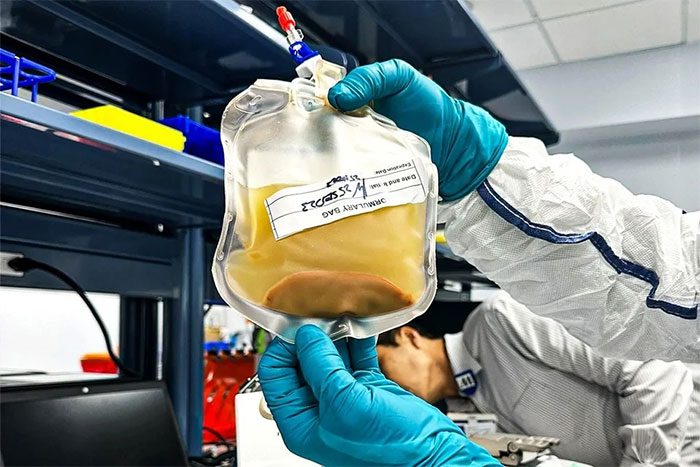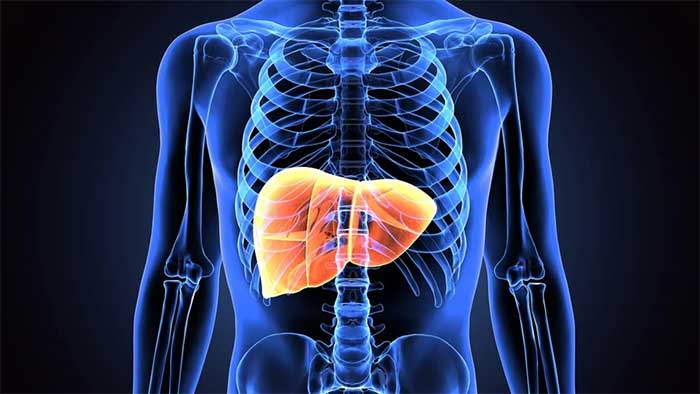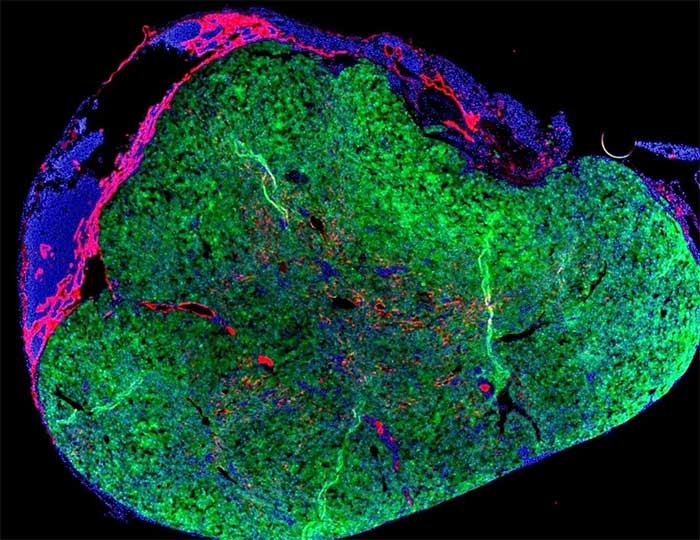Scientists Inject Liver Cells to Transform a Lymph Node into a Second Liver.
For the first time, scientists have “grown” a miniature liver inside the human body. This may sound like science fiction, but the idea was previously depicted in the medical drama Grey’s Anatomy, aired in 2018. Now, biotechnology company LyGenesis is working to turn this idea into reality.

Intravenous bags containing liver cells. (Photo: LyGenesis).
“Growing a Liver” Without Transplantation
Specifically, on April 2, LyGenesis announced that a volunteer had been injected with donor cells to transform one of their lymph nodes into a second liver. This is part of a clinical trial aimed at testing a treatment method for 12 adults suffering from end-stage liver disease.
These patients require liver transplants, but the supply of donor organs is insufficient. LyGenesis hopes to stimulate liver tissue growth robust enough that patients may not need a transplant.
Michael Hufford, co-founder and CEO of LyGenesis, shared: “We are using lymph nodes as a living bioreactor.” He noted that just a 10-30% increase in liver volume could have a significant impact on patients with end-stage liver disease.

If the liver-growing process is successful, one donated liver will have enough cells to treat 75 people. (Photo: Adobe Stock).
In the U.S., there are up to 10,000 people on the liver transplant waiting list. Many will have to wait months or years for a liver. This figure does not include those who need a new liver but are ineligible for a transplant due to other health issues.
Not all donor livers are suitable for patients waiting for a transplant. Sometimes the blood types do not match, or the livers are too fatty for use. However, with LyGenesis’s “liver-growing” process, one donated liver can provide enough cells to treat 75 people, according to CEO Michael Hufford.
From livers that are not suitable for transplantation, LyGenesis scientists isolate and purify liver cells, which are contained in intravenous bags. The next step is to deliver these cells to the appropriate location in the body.
Eric Lagasse, the Chief Scientific Officer of LyGenesis and a professor at the University of Pittsburgh, stated that healthy donor cells cannot be injected directly into a diseased liver, as they would not survive. About a decade ago, he identified lymph nodes as a potential site for cultivating a new liver.
Lymph nodes, shaped like small bean-shaped tissue masses, are an essential part of the body’s immune system, helping to combat infections. They also have the ability to expand and filter blood similarly to the liver.
Lymph nodes are located throughout the body, with about 500-600 nodes in an adult. Therefore, the use of a small number of lymph nodes to grow a liver will not adversely affect the rest of the body.
The More Damaged the Liver, the Larger the New One Grows
LyGenesis’s treatment method aims to recreate a cluster of lymph nodes in the abdomen connected to the liver via a network of veins. For the first patient, doctors inserted a thin, flexible tube with a camera at one end down the throat and through the digestive tract. Using ultrasound, they located the cluster of lymph nodes and injected 50 million liver cells into it.
LyGenesis has chosen lymph nodes close to the liver to take advantage of the signals released when filtering foreign substances in the body. The liver is the only organ capable of regeneration. Even when damaged, it can release growth factors and other molecules to facilitate the regeneration process. Theoretically, the injected donor liver cells will receive these signals to form new liver structures.

Lymph nodes will be injected with liver cells to form a second liver. (Photo: Lagasse Lab).
In initial experiments, Lagasse found that injecting healthy liver cells into the lymph nodes of mice led to vigorous growth and the formation of a second, smaller liver to take over the functions of the weakened liver. These new livers were about 70% the size of the original liver.
“The second liver grows to a certain size. It will stop growing when it reaches the necessary level to perform normal functions,” the scientist told Wired.
At the University of Pittsburgh, Lagasse and colleagues tested this method on pigs. In a study published in 2020, they found that pigs regained liver function after receiving liver cells injected into their abdominal lymph nodes.
When examining the lymph nodes containing the miniature liver, they observed that a network of blood vessels and bile ducts had formed naturally. The more severely the original pig liver was damaged, the larger the second liver grew. This indicates that the animal’s body can recognize healthy liver tissue and transfer functions to it.
However, the question remains: how many cells does a human need to develop a liver large enough to perform essential functions like filtering blood and producing bile? In the LyGenesis trial, 3 patients will receive 50 million cells injected into one lymph node. A second group of 4 patients will receive 150 million cells in 3 different lymph nodes. The third group will receive 250 million cells in 5 lymph nodes, meaning they could potentially have 5 small livers developing inside.
The effects of the therapy will not be immediate. Hufford indicated it may take 2-3 months for the new organ to grow large enough to take on some functions of the original liver. Like organ transplant recipients, trial patients will need to take immunosuppressive medication for the rest of their lives to prevent their bodies from rejecting the donor cells.
If this method proves effective, it could serve as a viable alternative to traditional liver transplantation, thereby saving many patients, Wired noted.



















































